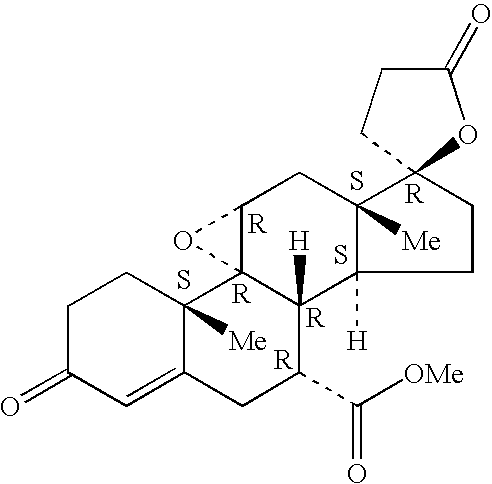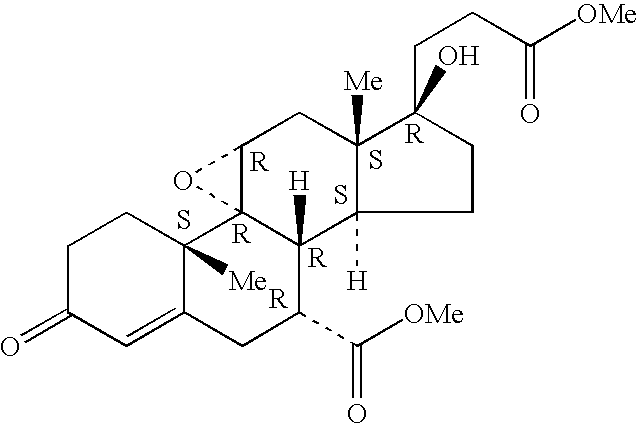Combination of an aldosterone receptor antagonist and an anti-diabetic agent
an aldosterone receptor and anti-diabetic agent technology, applied in the field of conjugation of an aldosterone receptor antagonist and an anti-diabetic agent, can solve the problems of adverse effects of aldosterone-mediated responses on the structure and function of the cardiovascular system and other tissues and organs, and contribute to organ damag
- Summary
- Abstract
- Description
- Claims
- Application Information
AI Technical Summary
Problems solved by technology
Method used
Image
Examples
embodiment 1
2. The method of Embodiment 1 wherein the cardiovascular-related condition is selected from the group consisting of coronary artery disease, hypertension, cardiovascular disease, renal dysfunction, cerebrovascular disease, vascular disease, retinopathy, neuropathy, hyperglycemia, hyperinsulinemia, insulin resistance, edema, endothelial dysfunction, and baroreceptor dysfunction.
3. The method of Embodiment 1 wherein the cardiovascular-related condition is hypertension.
4. The method of Embodiment 1 wherein the cardiovascular-related condition is cardiovascular disease.
embodiment 4
5. The method of Embodiment 4 wherein the cardiovascular disease is selected from the group consisting of coronary artery disease, heart failure, arrhythmia, diastolic dysfunction, systolic dysfunction, ischemia, sudden cardiac death, myocardial fibrosis, vascular fibrosis, impaired arterial compliance, myocardial necrotic lesions, vascular damage, myocardial infarction, left ventricular hypertrophy, decreased ejection fraction, cardiac lesions, vascular wall hypertrophy, endothehal thickening, and fibrinoid necrosis of coronary arteries.
6. The method of Embodiment 4 wherein the cardiovascular disease is heart failure.
7. The method of Embodiment 1 wherein the cardiovascular-related condition is renal dysfunction.
embodiment 7
8. The method of Embodiment 7 wherein the renal dysfunction is selected from the group consisting of glomerulosclerosis, end-stage renal disease, diabetic nephropathy, reduced renal blood flow, increased glomerular filtration fraction, proteinuria, decreased glomerular filtration rate, decreased creatinine clearance, microalbuminuria, renal arteriopathy, ischemic lesions, thrombotic lesions, global fibrinoid necrosis, focal thrombosis of glomerular capillaries, swelling and proliferation of intracapillary cells, swelling and proliferation of extracapillary cells, expansion of reticulated mesangial matrix with or without significant hypercellularity, and malignant nephrosclerosis.
9. The method of Embodiment 1 wherein the cardiovascular-related condition is cerebrovascular disease.
PUM
| Property | Measurement | Unit |
|---|---|---|
| structure | aaaaa | aaaaa |
| resistance | aaaaa | aaaaa |
| frequency of incidence | aaaaa | aaaaa |
Abstract
Description
Claims
Application Information
 Login to View More
Login to View More - R&D
- Intellectual Property
- Life Sciences
- Materials
- Tech Scout
- Unparalleled Data Quality
- Higher Quality Content
- 60% Fewer Hallucinations
Browse by: Latest US Patents, China's latest patents, Technical Efficacy Thesaurus, Application Domain, Technology Topic, Popular Technical Reports.
© 2025 PatSnap. All rights reserved.Legal|Privacy policy|Modern Slavery Act Transparency Statement|Sitemap|About US| Contact US: help@patsnap.com



